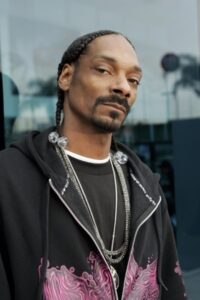In part two of this series I will be analyzing the next two songs on Kendrick’s album. These songs are “King Kunta” and “Institutionalized,” both popular favorites from Kendrick fans. Furthermore, these two songs beautifully expand on the first two tracks and help contribute to the weighty theme of the album.
King Kunta:
This song represents Kendrick persisting resistance against the pimping the music industry and capitalism are promoting. The song title is based off of the character Kunta Kinte, from the 20th century novel Roots, written by Alex Haley. Kendrick’s ingenious title is an oxymoron, comparing a slave to a king. A noticeable trend among Kendrick’s music is analogy to pieces of literature. For example the album’s title, To Pimp A Butterfly, is a play-on of Harper Lee’s, To Kill a Mockingbird.
First Lines:
The song starts off with a modern bubbly noise preparing your eyes for the plethora of strange sounds to come. The first very notable lyrics are “B**ch, where you when I was walkin’? Now I run the game, got the whole world talkin.” These lyrics are referring to the absences of many family members, friends, and other peers in Kendrick’s times of struggle. Moreover, he is now saying that these same people are now reaching out and communicating eagerly because of his newfound fame and wealth. The second line is talking about Kendrick’s large influence, prowess, and riches. Furthermore, the next couple of lyrics, “got the whole world talkin,” conveys that he is a hot topic. This indicates that he’s now gained recognition from those who once ignored and neglected him.
Second Lines:
Immediately after these two lines, Kendrick continues rapping, “King Kunta, everybody wanna cut the legs off him. Kunta, black man taking no losses.” Here Kendrick is referring to King Kunta as himself. In the first line, Kendrick is making a reference to the character in Roots where he gets caught trying to escape his plantation and gets his right leg cut off. Furthermore, by saying “everybody,” he is saying how people are trying to prevent Kendrick’s rapid uprise in the music industry. This is due to jealousy, envy, and spite. Kendrick continues, stating he’s “taking no losses.” He rightfully believes his fame is just beginning. He predicts it will skyrocket with the release of this album. This is despite the attempts to suppress and terminate his popularity.

Third Lines:
Finishing my analyzation of Kendrick’s stupendous lyricism, we move to two of my favorite lines in the song and the album. When referring to nature of corruption and addiction in our society today, Kendrick raps, “The yam brought it out of Richard Pryor.” This is Kendrick reminding the audience of the time when Richard Pryor set himself on fire after abusing cocaine (“yam”). Kendrick is showing the consequences that accompany severe addiction and abuse of drugs. Continuing the verse, Kendrick sings, “Manipulated Bill Clinton with desires.” This is a ingenious analogy to the supposed affair between Former President Bill Clinton with the White House intern, Monica Lewinsky. Additionally, Kendrick utilizes the word “desires” to, again, convey the dangers of temptation. This beautiful juxtaposition between the celebrity and political figure show that every walk of life can be corrupted by power, addiction, and urges.

Institutionalized:
This next track on the album is a meaningful and slower paced song that spans over four and a half minutes. This track is about Kendrick’s youth. Kendrick mentions the shame that he has felt for so long about his adolescence in poverty-stricken Compton. Additionally, he points out the struggle and entrapment he experienced while rapping in the hood, trying to “make it out.” The song also includes Kendrick pointing out the corruption and greed involved within the music industry. Lastly, the song has features of Bilal, Anna Wise, and Snoop Dogg. These three features all contribute to the message of the song by sharing their similar experiences, rapping in the hood.
First Lines:
The song opens with the lines, “What money got to do with it? When I don’t know the full definition of a rap image?” This is an interaction between Uncle Sam and Kendrick, where Kendrick is pointing out that he doesn’t know how to properly handle his newfound fame and wealth. This is because of the poor education and role models he was brought up with. Furthermore, Kendrick highlights his struggle with the material aspects of success versus the integrity and morality of his artistry and identity.
Second Lines:
Kendrick continues saying, “I’m trapped inside the ghetto and I ain’t proud to admit it.” In these lines, Kendrick further addresses that the lifestyle of the hood is still embedded into his character. Additionally, he exhibits the shame he feels about his youth. He communicates that he doesn’t know what to do with his immense wealth because his mind has been “pimped out.” Finishing these lines Kendrick raps, “Institutionalized, I keep runnin’ back for a visit.” This line suggests Kendrick has overcome the shame of his Compton upbringing but struggles to entirely avoid slipping back into his hood lifestyle, as it’s deeply ingrained in his character.

Third Lines:
Next, Bilal, representing Kendrick’s grandmother, sings the chorus, “Sh*t don’t change until you get up and wash yo’ a**, n**ga.” This chorus places Kendrick’s grandmother as an important and encouraging role model during his struggle in Compton. Moreover, the line is conveying that Kendrick’s situation won’t change until he becomes determined to make it change. If Kendrick wants to escape this poverty-stricken life, he has to stop feeling so bad for himself and face the problem head on. Additionally, Kendrick is using this chorus to explain his friends same struggle. Kendrick gives them money and support but can’t help them escape their life of crime and theft. He is communicating that this is something they have to actively stop doing through perseverance and ethical, honest work.

Fourth Lines:
Finishing up the song we will move to Snoop’s verse. Snoop raps, “Talented but still under the neighborhood ruse. You can take your boy out the hood. But you can’t take the hood out the homie.” These impactful lines expand on the idea that the culture and mentality of the hood remains ingrained in rappers. Furthermore, Snoop is saying that while you can get out of the hood physically, mentally you will remain. Snoop continues, rapping “Took his show money, stashed it in the mozey wozey. Hollywood’s nervous.” By referencing stashing money, Snoop is showing his distrust with the music industry. Additionally, Snoop is trying to protect himself financially against the money hungry music business.
Wrapping Up:
Snoop ends the song saying “F*ck you, goodnight, thank you much for your service.” This sarcastic and bitter ending to the song conveys that Snoop is suspicious of the industry’s motives. Lastly, Snoop is reminding the audience to pave your own path and defy expectations and common norms among the music industry. In the next part of this series I will analyze one of my favorites, “These Walls” and the impactful “U.” Each song is vital to the message of the album and are all meticulously placed to chronologically bring you through Kendrick’s intense emotions, perspectives, and passions. So, tune in next time to gain a deeper insight into the album’s overall meaning and significance in our dynamic world today.
Stay tuned to The Roundup for more articles regarding rap!
